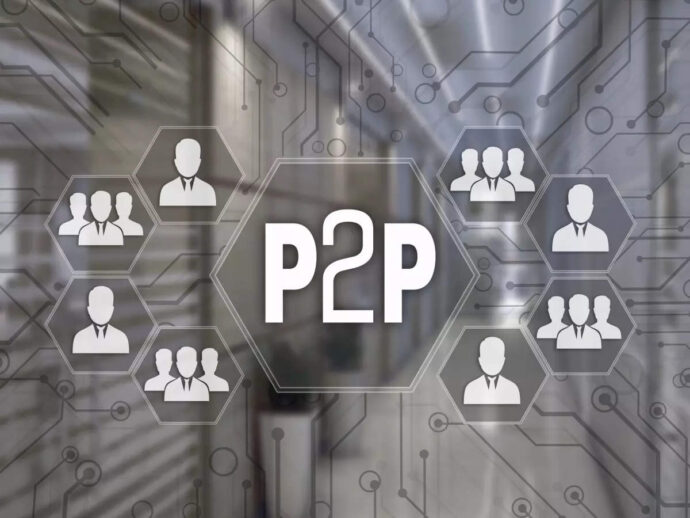The world of finance has witnessed significant transformations over the years, driven by technological advancements and changing consumer preferences. One such disruptive innovation is peer-to-peer (P2P) lending, which has emerged as a viable alternative to traditional banking systems. This article delves into the intricacies of peer-to-peer lending, exploring its mechanisms, advantages, and potential risks.
Understanding Peer-to-Peer Lending
Peer-to-peer lending, often called P2P lending or crowdfunding, is a financial practice that connects individuals or businesses needing funds with potential investors, bypassing traditional financial intermediaries like banks. The concept is based on sharing economy and disintermediation principles, where borrowers and lenders interact directly through online platforms.
P2P lending platforms act as intermediaries that facilitate the borrowing and lending process. These platforms provide an online marketplace where borrowers can list their loan requests, specifying the desired loan amount and purpose. Conversely, individual investors can browse these loan listings and choose to fund the ones that align with their risk tolerance and investment goals.
Mechanisms of Peer-to-Peer Lending

Peer-to-peer lending (P2P lending) is a revolutionary financial model that connects individuals seeking loans with potential investors through online platforms, effectively bypassing traditional financial institutions. This lending mechanism introduces a streamlined process that benefits both borrowers and lenders. Let’s delve deeper into the mechanisms of P2P lending to understand how it works:
- Application and Verification: Borrowers apply for loans on P2P platforms, providing relevant personal, financial, and credit information. The platform evaluates the creditworthiness of the borrowers using algorithms and data analysis to assign them a risk profile.
- Loan Listings: Once approved, the borrower’s loan request is listed on the platform, detailing the loan amount, interest rate, purpose, and risk level. Investors can review these listings and decide which loans to fund.
- Investment: Investors can fund a portion of a loan or multiple loans, diversifying their investment to mitigate risks. Since P2P loans are typically fractionalized, a single loan can be funded by multiple investors.
- Repayment: Borrowers repay the loans in regular installments, which include both principal and interest. P2P platforms collect the repayments and distribute them to the investors.
- Returns for Investors: Investors earn returns from the interest paid by borrowers. The interest rates are often higher than traditional savings accounts, making P2P lending an attractive investment option.
- Repayment Process: Borrowers must repay the loan in regular installments, including the principal amount borrowed and the interest accrued. The P2P platform manages the repayment process, collecting the payments from borrowers and distributing them to the respective investors who funded the loan.
- Investor Returns: Investors earn returns through the interest paid by borrowers. The interest rates on P2P loans are typically higher than those offered by traditional savings accounts, making P2P lending an attractive investment option for individuals seeking higher yields.
- Monitoring and Customer Service: Throughout the loan term, the P2P platform monitors the loan repayments and provides updates to both borrowers and investors. In case of any issues or concerns, the platform’s customer service team is available to assist both parties.
- Loan Default and Collection: While P2P lending platforms use advanced algorithms to assess the creditworthiness of borrowers, there is always a risk of loan default. If a borrower defaults on their loan, the P2P platform may initiate a collection process to recover the outstanding amount on behalf of the investors. However, it’s important to note that default risk is inherent in lending and is one of the potential risks associated with P2P lending.
Advantages of Peer-to-Peer Lending
Peer-to-peer lending (P2P lending) has gained significant popularity due to its numerous advantages to both borrowers and investors. This innovative financial model disrupts traditional lending systems by leveraging technology and connectivity to create a more inclusive and efficient lending environment. Here are the key advantages of P2P lending:
- Access to Capital: P2P lending provides an alternative funding source for individuals and small businesses that may face challenges obtaining loans from traditional banks due to strict lending criteria.
- Higher Returns: Investors can earn higher returns than traditional savings and investment options, especially in today’s low-interest-rate environment.
- Diversification: Investors can diversify their investments across multiple loans, reducing the impact of defaults on their overall portfolio.
- Ease of Use: The online nature of P2P lending platforms makes it convenient for both borrowers and investors to participate from anywhere with an internet connection.
- Quick Approval: Borrowers often experience faster loan approval and disbursement than traditional banks, which may involve lengthy processes.
Risks and Considerations

Peer-to-peer lending (P2P lending) offers an alternative approach to borrowing and investing. Still, like any financial activity, it comes with risks and considerations that borrowers and investors should be aware of. Here, we’ll highlight and explain some of the critical risks and considerations associated with P2P lending:
- Default Risk: Like any form of lending, P2P lending carries the risk of borrowers defaulting on their loans. Platforms may implement risk assessment techniques, but losses are still possible.
- Regulatory Environment: P2P lending is subject to regulatory oversight, which can vary by jurisdiction. Investors and borrowers should be aware of the legal framework in their region.
- Lack of Collateral: P2P loans may only sometimes be secured by collateral, increasing the risk for investors in case of borrower default.
- Marketplace Risks: The success of P2P lending platforms depends on their ability to attract borrowers and investors. Platform reliability and trustworthiness are essential considerations.
Peer-to-Peer Lending vs. Online Trading Apps
While P2P lending offers an alternative form of investment and financing, online trading apps (ex. Bitcoin Profit) present another avenue for individuals to participate in the financial markets. Online trading apps enable users to buy, sell, and trade various financial instruments such as stocks, bonds, commodities, and cryptocurrencies. Here are some distinctions between P2P lending and online trading apps:
- Nature of Investment: P2P lending involves lending money to borrowers for interest, while online trading apps involve purchasing ownership of assets like stocks or commodities with the potential for capital appreciation.
- Risk and Returns: P2P lending carries the risk of borrower default, impacting returns. Online trading’s returns are subject to market fluctuations and asset performance.
- Involvement: P2P lending is more passive, involving regular repayments. Online trading often requires active decision-making and market analysis.
- Liquidity: Online trading allows for more immediate liquidity since assets can be sold quickly. P2P lending involves waiting for loan repayments.

Final Word
P2P lending and online trading apps offer individuals alternative ways to invest and manage their finances. P2P lending can allow borrowers to access funds and investors to earn higher returns, while online trading apps provide opportunities to participate in financial markets. As with any financial endeavor, due diligence, awareness of risks, and alignment with personal financial goals are crucial when considering either option.















